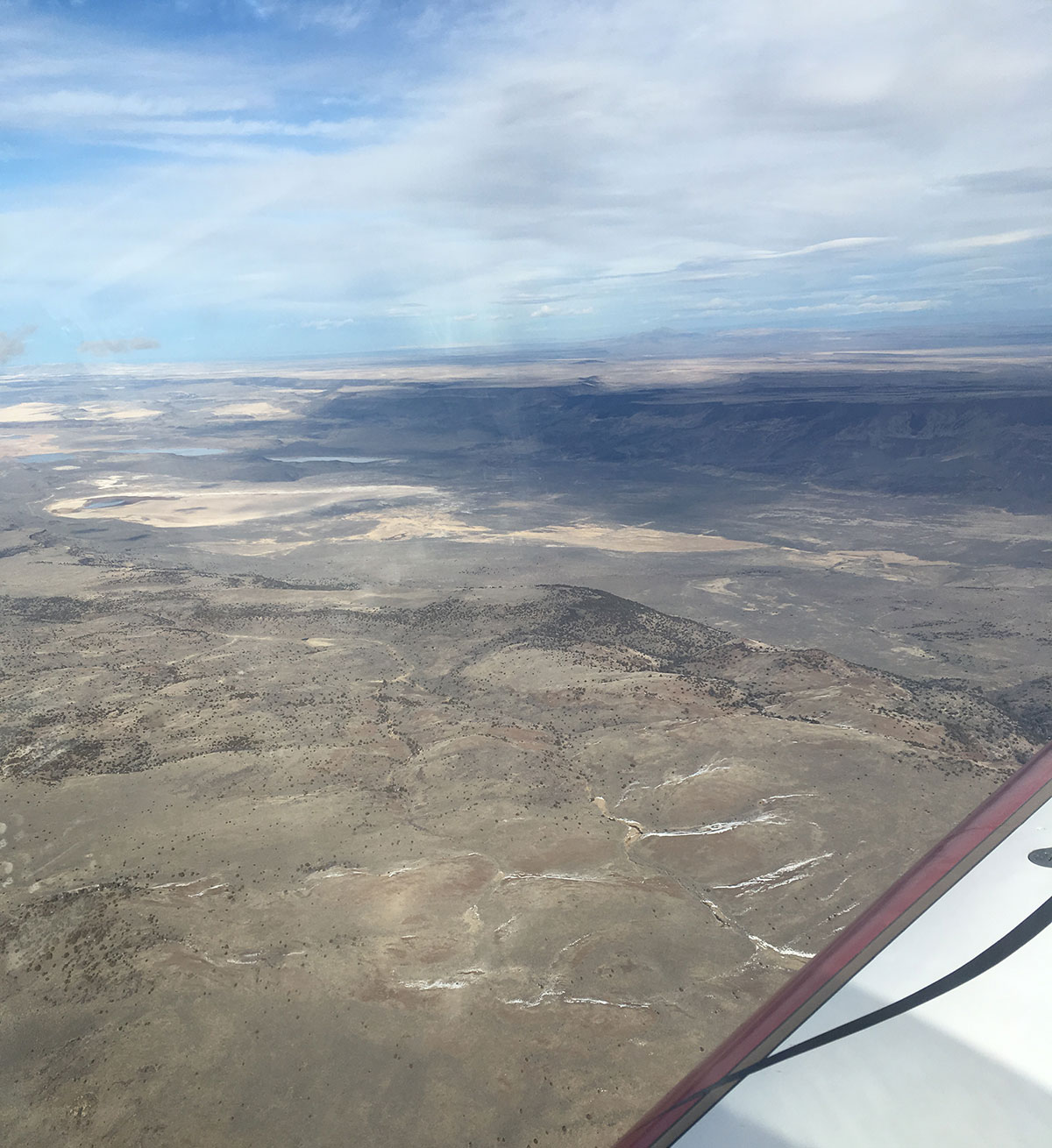I spent most of my life living – and flying – in the middle of the country. It’s hard to find places between the Rockies and the east coast where you can’t find civilization in a reasonable number of miles. Heck, keep ten thousand feet of air between you and the earth, and you’ll almost always be able to reach a runway! But the west is different.
Flying between the Reno (NV) area and Yakima (WA), level at 10.5K, I looked out and realized that there was nothing but the wilds of central Oregon for as far as I could see – and with western visibilities, I could see a LONG way. It’s magnificent, and frankly, there are lots of places to safely put an airplane down if the oil pressure went away, or a fuel line got blocked… but after you find a smooth patch of desert, a lakebed, or a dirt road, and all the pieces stop moving – what then? Do you have a plan? Are you equipped?
Flying along in shorts and a T-shirt are great when your longest walk for help is a few miles. But out here, you could be fifty , or eighty miles (or more) from help. And those who study out-in-the-boonies landings are adamant that “if you’re not wearing it, you don’t have it.” So when I fly this kind of cross-country, I wear a vest with various elements of survival gear – the most important being a small GPS-Enabled PLB. There are thousands of different lists you can find on the internet for everything else you might want in your pockets – but getting found is the big one.
In the winter – I throw in cold-weather gear. In the summer, well, it can STILL get cold at night, so cool-weather gear isn’t a bad idea. Sun protection – always. And don’t forget water. If you’ve got that PLB, and you’ve registered it, food shouldn’t be necessary, except to keep you busy until the cavalry arrives.
It’s a big world out here, and “walking out” can mean a week’s worth of hiking. Fly equipped so that if a bad day happens, you don’t have to think about survival – you can just fly the airplane to a good safe landing, knowing that once you’re stopped – you got this.











where can I find one of your survival vest.
I use re-purposed fishing or photographers vests – search for those online, and you’ll find thousands of choices!
Thanks for the safety vest suggestion. Yes we here in Australia are often faced with extreme desert type conditions and the survival vest can be a life saver. I used to carry a pack of condoms and a plastic shopping bag. Don’t laugh too much; have you ever seen how much water you can carry in a condom inside a plastic shopping bag and the parcel is so small. But please tell your wife or girlfriend what you’re doing, because it may save your marriage. Another suggestion is a small mirror just like the WW2 signalling mirror. I was involved (indirectly) with a Cessna 206 forced landing at sea and the searching aircraft flew back and forth over the swimming survivors (2) , alas the pilot drowned but a mirror may have located them to be saved.